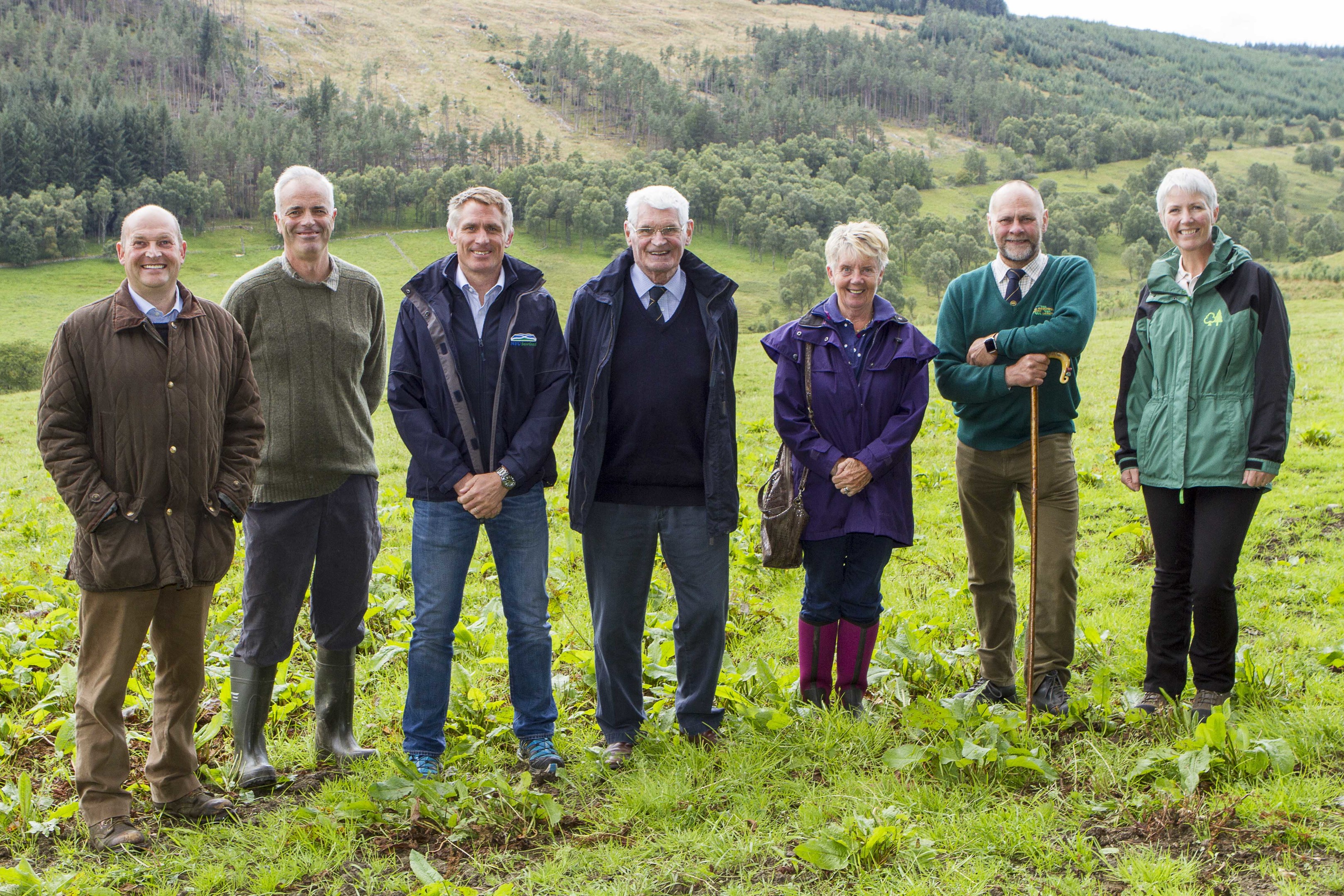A national campaign to encourage sheep farmers to grow more trees has won the backing of a Perthshire producer who claims almost every extensive sheep farm in Scotland would benefit from more forestry.
Pitlochry farmer Andrew Barbour hosted a National Sheep Association (NSA) gathering on his land at Mains of Fincastle as part of the organisation’s initiative to highlight the benefits of integrating sheep and trees. He said forestry offered financial and animal husbandry benefits and insisted he wouldn’t want to farm somewhere that didn’t have woodland shelter of some kind.
Mr Barbour farms 400 Texel crosses and 50 suckler cows on 540 hectares of land at 1000ft or above and told visitors that 10% of the farm was devoted to woodland. The shelter belts are made up of pine and larch and the commercial plantations are largely Douglas Fir, Sitka Spruce and Scots Pine.
“Agriculture has always been the primary objective but every previous generation here has planted shelter belts or woodland on the poorer land where there is access for lorries,” he explained.
“Timber is very important to us financially. It’s like a source of extra working capital that you can draw on periodically. It makes sense to diversify and spread your risk. It doesn’t need to affect stocking rates. But I wouldn’t want to turn over the whole farm to woodland. That would be concentrating all your eggs in one basket.
“This is a mixed cattle and sheep farm and the primary objective of the woodland is to provide shelter for stock as there can be fierce weather here, even in summer. The cattle are woodland-edge animals and as soon as there’s a drop of rain they head for the trees. They’re happy in there and a happy animal produces a good calf. Sheep don’t go near the trees when the weather is fine.”
Mr Barbour said that the proximity of shelter belts had enabled him to change his flock from Blackfaces to Texels because the woods acted like sheds in winter.
“The benefits of forestry to farming can translate into pounds and pence saved,” he added.
“In the hard winter of 1947 when snow and storms killed half the UK’s sheep flock, my uncle didn’t lose a single sheep here because there were established woods and shelter belts. That’s what saved them.”
Mr Barbour said the tree and sheep enterprises generated similar annual returns of around £129 per hectare for his business.
“It’s difficult to make meaningful comparisons because margins are different and we keep the best land for agriculture, which will remain the case. But the two businesses work well together and we are involved in tree care or planting every year which fits in around farm work.”










